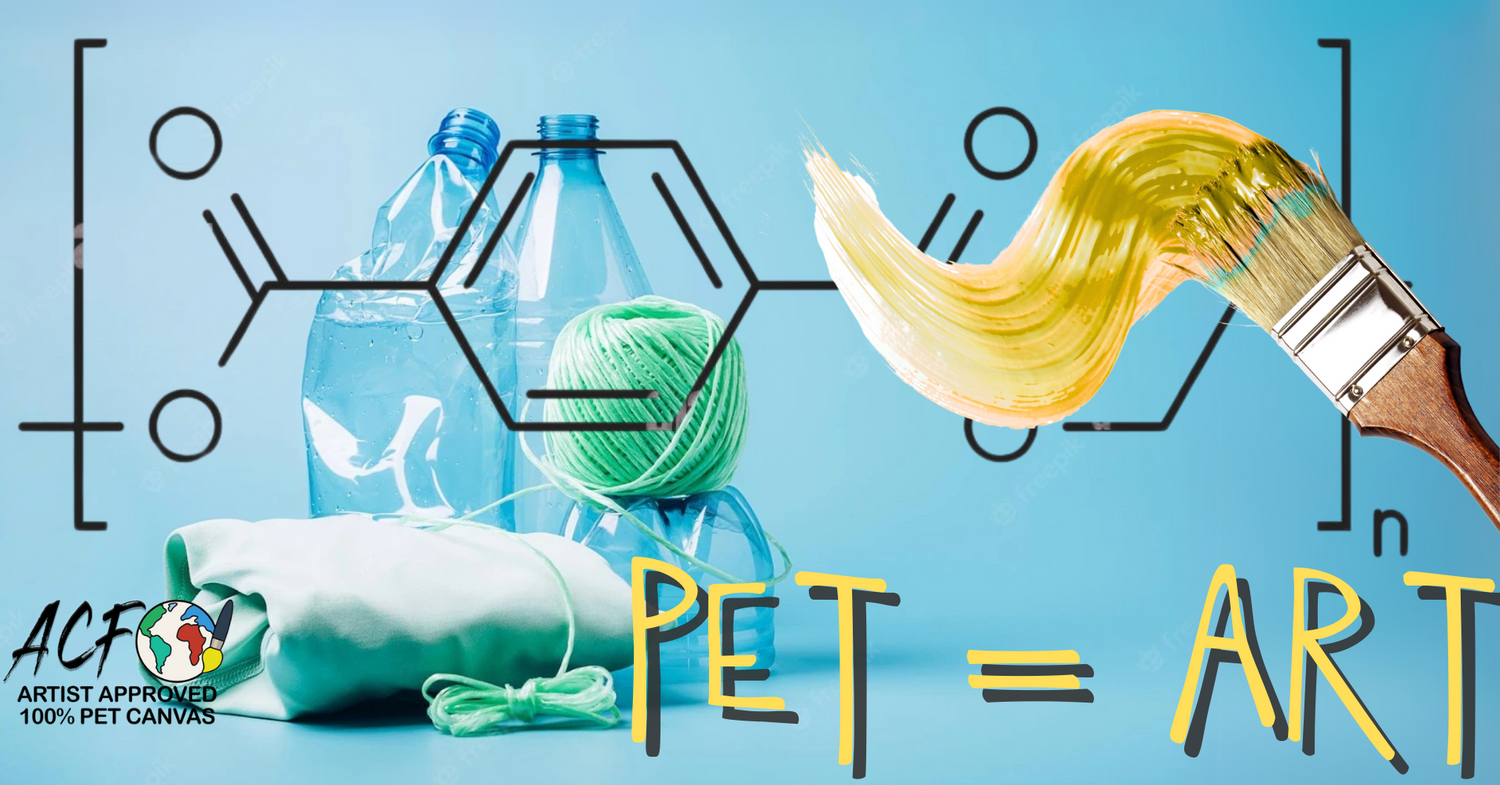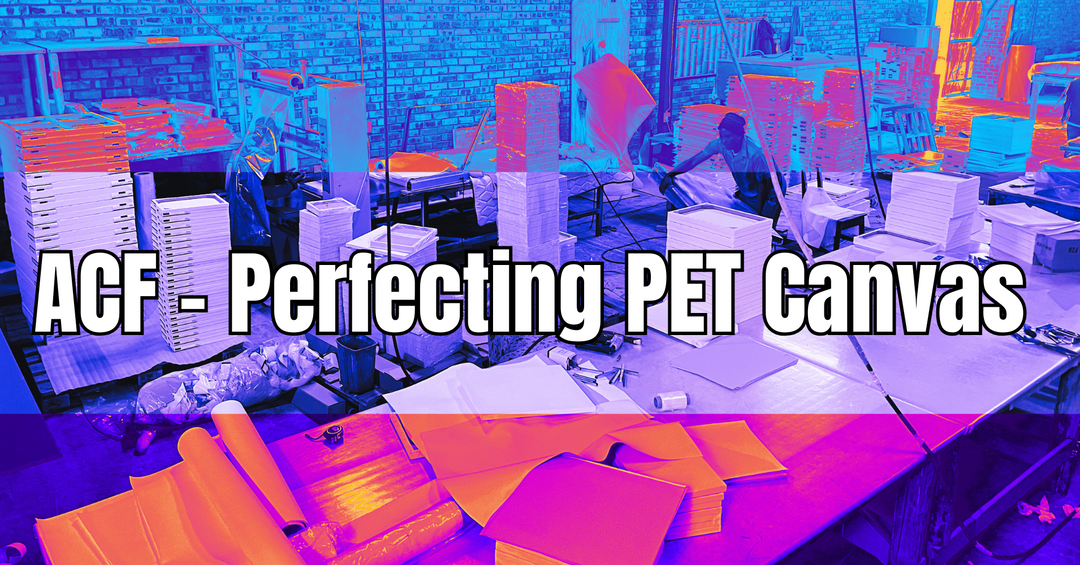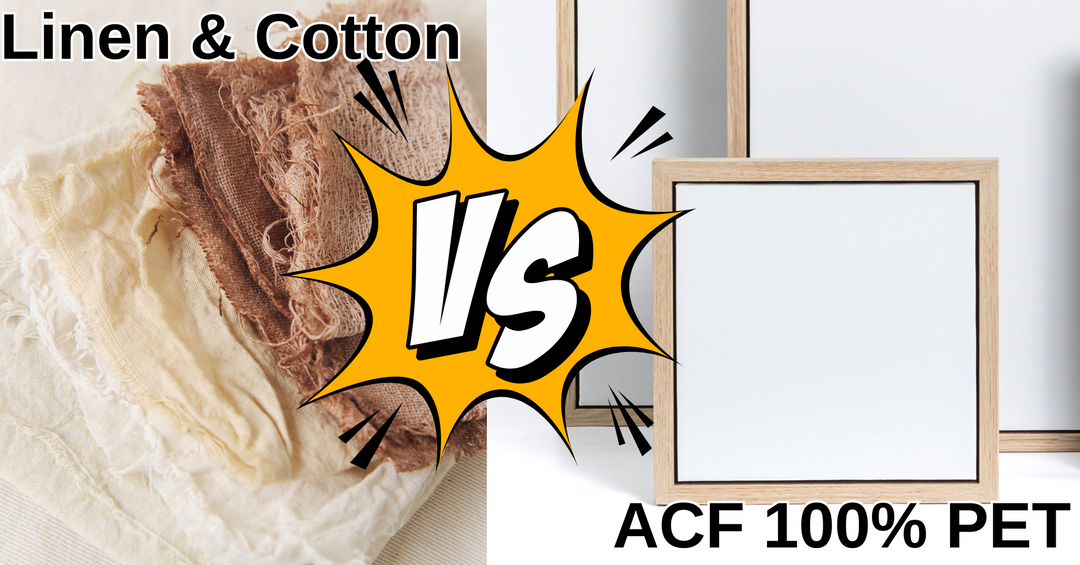Why Most Synthetic Canvases Have Failed — And Why PET is the Material That Got It Right
 In the ever-evolving world of artist materials, the canvas has remained relatively unchanged for centuries. Traditionally made from cotton or linen, it has been revered for its familiarity—but plagued by problems like warping, sagging, mildew, and deterioration over time. As artists demanded more stability and consistency, the industry began experimenting with synthetic alternatives. Most of them failed.
In the ever-evolving world of artist materials, the canvas has remained relatively unchanged for centuries. Traditionally made from cotton or linen, it has been revered for its familiarity—but plagued by problems like warping, sagging, mildew, and deterioration over time. As artists demanded more stability and consistency, the industry began experimenting with synthetic alternatives. Most of them failed.
 The Problem With Early Synthetic Canvases
The Problem With Early Synthetic Canvases
Synthetic artist surfaces began appearing more frequently in the late 20th century. Manufacturers experimented with materials like PVC, nylon, polypropylene, and blends of plastics and fibres. These options were cheap and widely available—but for serious artists, they introduced new problems:
-
Poor surface feel: Many early synthetics felt too plasticky or slippery, making them incompatible with traditional painting techniques.
-
Paint adhesion issues: Some surfaces resisted gesso or caused paint to pool or separate unpredictably.
-
Excessive flexibility: Materials like nylon were too stretchy or elastic, leading to instability under brush pressure or tension changes.
-
Environmental and health concerns: PVC and similar polymers often off-gassed toxic chemicals and degraded under UV exposure.
-
Unstable tension: Many synthetic canvases sagged over time or were too sensitive to heat and humidity, similar to their natural counterparts.
As a result, synthetic canvases gained a reputation for being low-end or unsuitable for archival-quality work. Conservationists, gallerists, and collectors remained skeptical—until polyester (specifically PET) came along.

Why PET Polyester Stands Apart
PET (polyethylene terephthalate) is a type of polyester that balances durability, stability, and compatibility with painting media. Unlike other synthetics, PET has been embraced by both conservation scientists and professional artists for its performance.

Key Advantages of PET for Artist Canvases:
-
Dimensional stability: PET does not stretch, shrink, or warp significantly under environmental changes. This makes it ideal for maintaining consistent tension on a frame.
-
Excellent paint grip: When properly primed, PET holds gesso and paint evenly, without resisting or soaking in.
-
Archival performance: PET is chemically stable, resistant to microbial growth, and does not degrade like cotton or linen.
-
Environmental resilience: It resists moisture, mould, and UV degradation better than most other materials.
-
Conservation-endorsed: The definitive reference book The Conservation of Easel Paintings (Routledge, 2013) states:
“In the early twenty-first century, polyester (PET form) exhibits the best combination of properties and provides the most promising starting point to improve the performance of artists’ canvas even though it has yet to match linen or cotton kinaesthetically or aesthetically.”
What About the Feel?
For years, the main hesitation around polyester was its feel. Artists didn’t like the slick, cold surface of many commercial polyesters. But innovation has changed that. Companies like ACF have developed proprietary PET canvases that replicate the tooth and texture of traditional surfaces while delivering all the technical benefits of synthetic performance.

The Verdict
Not all synthetic canvases are created equal. Most early attempts failed because they didn’t understand what artists truly need: a reliable surface that feels right under the brush, holds up over time, and doesn’t warp with every weather change. PET polyester is the first synthetic to get it right. It’s not a compromise—it’s an upgrade.
If you’re tired of sagging cotton, brittle linen, or mystery plastic blends, it might be time to rethink your surface.

Further reading: The Conservation of Easel Paintings (Routledge)





Leave a comment
This site is protected by hCaptcha and the hCaptcha Privacy Policy and Terms of Service apply.